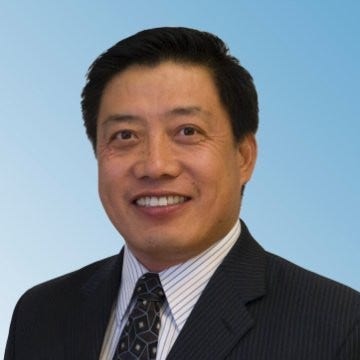Intel Loses Top Network Exec Amid Group Leadership Change
Hong Hou’s departure as COO of Intel’s Network and Edge Group was disclosed after CEO Pat Gelsinger announced internally last week that Sachin Katti would take over as the business unit’s general manager from Nick McKeown, who moved into a new role within the division after returning from medical leave.

Intel has lost a top executive within the chipmaker’s Network and Edge Group, a small business unit considered by CEO Pat Gelsinger a “critical piece” of the company’s strategy.
Hong Hou departed his role this month as corporate vice president and COO of the Network and Edge Group, according to his LinkedIn profile. In a Friday post on the social network, Hou said he started a new job as president of the semiconductor group at Brooks Automation, a Chelmsford, Massachusetts-based provider of automation equipment for chip manufacturers.
[Related: Intel’s Earnings ‘Collapse’ And Its Comeback Plan: 7 Things To Know]
Intel, Hou and Brooks Automation did not respond to requests for comment.
Hou’s departure was disclosed after Gelsinger announced internally on Feb. 7 that Sachin Katti would take over as general manager of the Network and Edge Group. Katti had been serving as the group’s interim leader for several months in the absence of its original leader, Nick McKeown, who was on medical leave since late last year. McKeown returned to the Network and Edge Group last week with the new role of chief innovation officer.
While Hou’s departure was only revealed this week, employees had been aware of his plan to leave since at least late January, according to a source familiar with the discussions.
Hou joined Intel in 2018 as vice president and general manager of the silicon photonics division within what was known at the time as the Data Center Group. He then became general manager of the Connectivity Group within the Data Platforms Group, which was formed in 2019 through a restructuring of the Data Center Group.
Hou’s final job change at Intel was in September 2022 when he became McKeown’s lieutenant as COO of the Network and Edge Group. Abbreviated by Intel as NEX, the division was formed as part of a major restructuring orchestrated by Gelsinger in 2021 that brought together the Connectivity Group, the Network Platforms Group and the Internet of Things Group.
While NEX is one of Intel’s smaller business units, Gelsinger has considered NEX a “critical piece” of the company’s overall strategy, in part because of growth prospects with telecom firms and with datacenters looking at silicon photonics solutions and SmartNIC-like devices.
The business unit generated $8.9 billion in revenue last year, which represented a 11 percent increase and amounted to 14.1 percent of the company’s total sales in 2022. By contrast, Intel’s largest divisions, the Client Computing Group and Datacenter and AI Group, declined in revenues last year by 23 percent to $31.7 billion and 15 percent to $19.2 billion, respectively.
However, NEX has faced the cost pressures and lower demand felt by Intel’s PC and server business units. In the fourth quarter of last year, the group’s revenue declined 1 percent year-over-year while its operating income declined 84 percent over the same period. The decreased profitability was the result of Intel ramping up investments for its manufacturing process and product road maps.
NEX has also been subject to the multibillion-dollar cost-cutting campaign that started last fall. In the most recent earnings call, Gelsinger said the company will end future investments on the Tofino network switch chip product line that originated from Intel’s 2019 acquisition of Barefoot Networks.